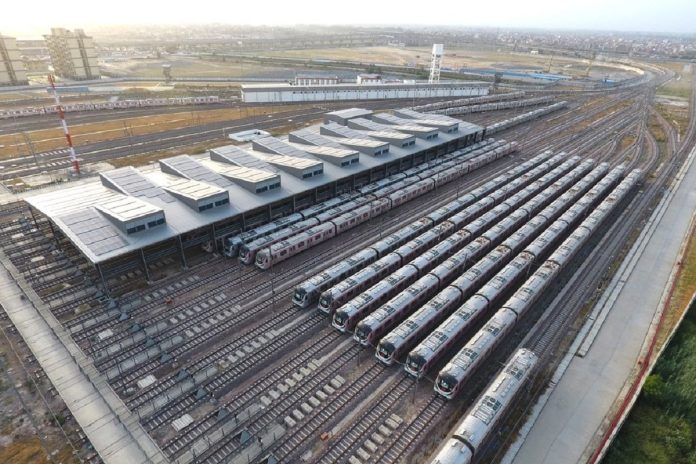Snapshot
The phase IV of Delhi Metro envisages construction of a new 104-km metro railway line that connects the Majlis Park metro station to the current RK Ashram Marg metro station.
The Delhi Metro Rail Corporation is working on its Phase IV expansion to improve rail connectivity between the national capital and the further regions of the National Capital Region.
The project envisages construction of a new 104-km metro railway line that connects the Majlis Park metro station to the current RK Ashram Marg metro station. Currently in the design stage, the project team expects to complete the Phase IV expansion project by the end of 2022.
Delhi Metro Rail Corporation (DMRC) was responsible for reviewing the detailed project report and proposing changes in the alignment design for the railway track section between RK Ashram and Majlis Park metro stations based on current requirements. The new rail corridor includes nine interchange stations, six of which are underground while the other three are elevated.
This project faced many design challenges, as the city of Delhi is a densely populated area, and the railway line passes through areas of mixed traffic. As of 2016, the population in the metro area was over 27.9 million people.
The region’s heavy congestion results in minimal land availability and DMRC needed to propose alternative design options in the construction of the railway to circumvent congested areas. Additionally, the team needed to maintain safe offset distances from historical monuments in an effort to prevent their deterioration.
Finalising Designs Faster
The DMRC project team prepared the alignment, integrating Google Maps through OpenRail Designer (formerly Bentley’s Power Rail Track) to help team members better visualise the design. This capability elevated design accuracy by providing a more comprehensive visualisation, which resulted in increased efficiency and saved time in finalising the proposed alignment.
Designing the alignment at stations also posed challenges, especially with regards to maintaining the proper horizontal and vertical distances. The team could modify the alignment easily with OpenRail Designer.
Revisions made to the proposed alignment design included shifting and lengthening stations and tunnels, changing track alignment, deepening stations to fit clearance levels, and rotating tracks to avoid
densely populated residential areas, station boxes, and multistory buildings. The team also identified numerous changes to the initial track alignment and optimized the design to minimize property acquisition.
Additionally, the proposed design maintained safe offset distances from protected monuments while minimizing property acquisition at the station location. As a result, the railway will integrate into densely populated areas while preserving the city’s cultural heritage.
Continuing a Commitment
The project team used OpenRail Designer to complete the 3D alignment design in less than three months. The application’s capabilities made it easier to quickly make necessary changes.
Visualizing the final product and sharing the design with all participants was simple when utilising Bentley’s 3D capabilities. With this quick turnaround, the team reduced resource hours and project costs.
The project continues DMRC’s continual efforts to help the local population travel easier and safer, while also reducing their environmental impact.
The system is the first railway project in the world to claim carbon credits for regenerative braking. It has also been certified by the United Nations as the first metro rail and rail-based system in the world to get carbon credits for reducing greenhouse gas emissions.
The Delhi Metro rail system has helped to reduce pollution levels in the city of New Delhi by 630,000 metric tons every year, thus diminishing global climate change. Many stations have roof-top solar power plants and the metro system has helped remove about 700,000 vehicles off the streets.
The Phase IV expansion will make it possible for the organisation to continue improving or sustaining a good quality of life for the populations relying on this piece of infrastructure.
Established in 1995, the Delhi Metro Rail Corporation now has 266 trains with four, six, and eight coaches. More than 100 six coach trains and 60 eight-coach trains are currently operational.


